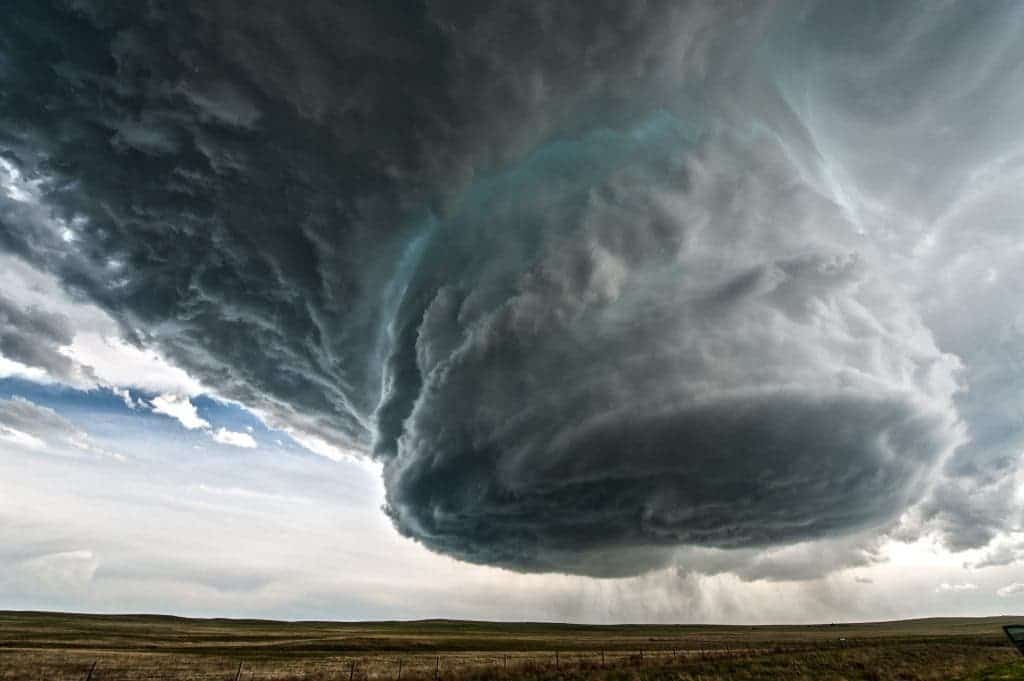
No, what you see here isn’t a gateway to hell or an alien invasion. What you see here is a supercell – a thunderstorm that is characterized by the presence of a mesocyclone: a deep, persistently rotating updraft. Supercells are usually found isolated from other thunderstorms, although they can sometimes be embedded in a squall line. Typically, supercells are found in the warm sector of a low-pressure system and can last for hours, taking various shapes and sizes. They often look scaringly amazing, like in the picture above.
Supercells can occur anywhere in the world, but they require specific weather circumstances to take place. Though there is no definitive classification, it seems that supercells are most frequent in the Great Plains of the central United States and southern Canada extending into the southeastern U.S. and northern Mexico, central Argentina, Uruguay and southern Brazil and Australia. The areas with highest frequencies of supercells are similar to those with the most occurrences of tornadoes.






